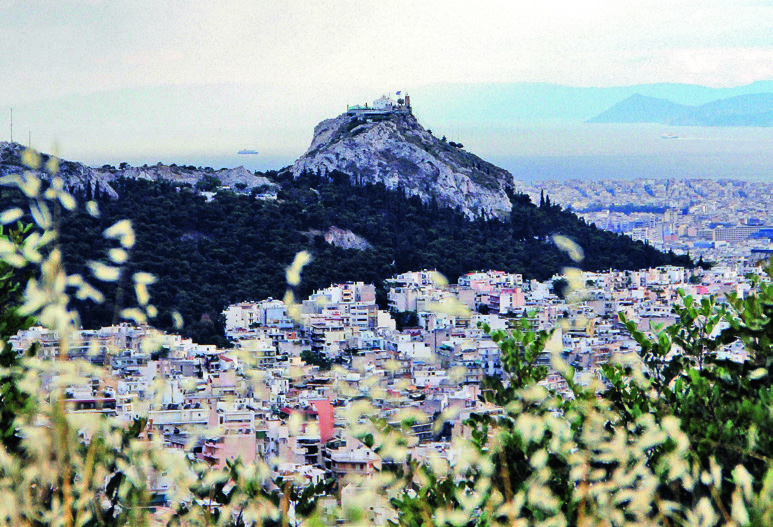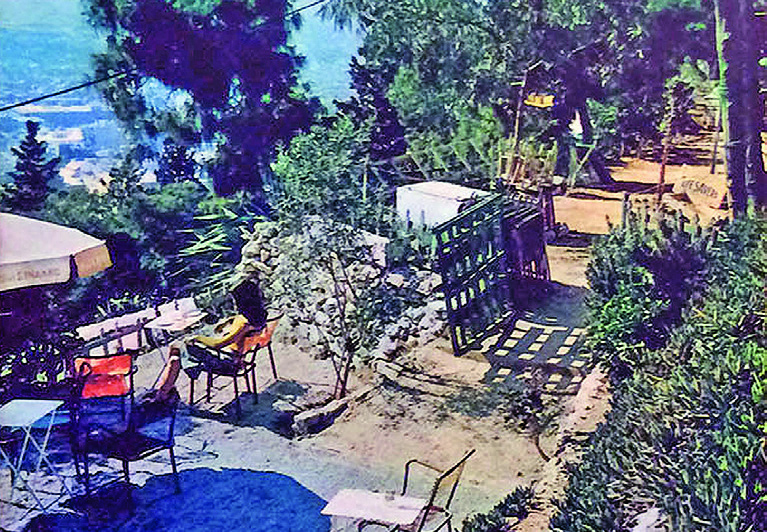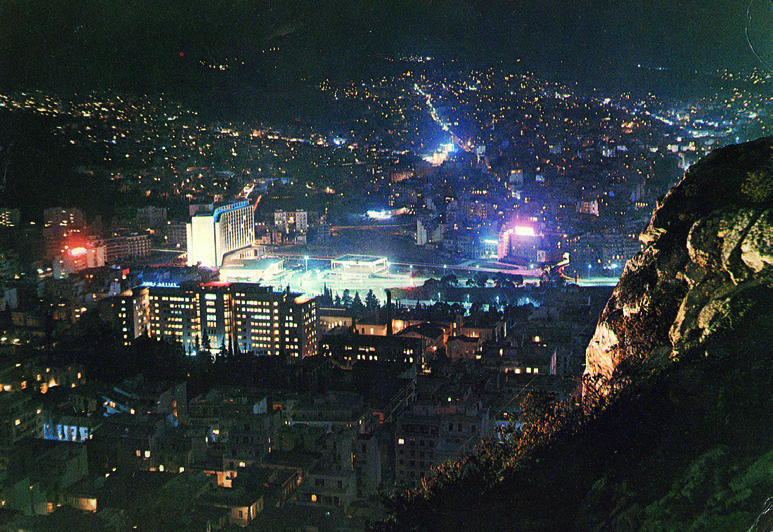Exploring Athens’ erstwhile beacon of peace
There is more to the capital’s Mount Lycabettus than meets the eye, as a long walk and a closer look at its tales and monuments will tell us

Rising 200 meters above central Athens and 300 meters above sea level, with views that stretch across the city toward the Saronic Gulf, there is a sugar-cube chapel that looks like it belongs on one of the Cycladic islands. It is the Church of St George (Ai-Giorgis), perched on the summit of Mount Lycabettus like a crown or the palace of some tiny statelet in the clouds. And that tiny state has its own unusual and charming urban history.
The Lycabettus summit was home in the second half of the 19th century to a monk, the sole overlord and caretaker of the most aristocratic spot one could imagine being a monk. He died in the early 20th century and was succeeded by one of his acolytes. When he too passed away in the early 1930s, he was buried at the top of Lycabettus, next to his predecessor. Their tomb is the highest in all of Athens.
The ascetic visage of this successor to the “king” of the mount has been immortalized in a photograph found in the archives of the Hellenic Broadcasting Corporation (ERT). He has a huge beard and is clutching a crook as he stands next to a lighthouse beacon, with Athens of the interwar years in the background. The beacon on Lycabettus was the installed by former and future prime minister Alexandros Papanastasiou on the occasion of the Universal Peace Congress that took place in Athens in 1929. The decision to move the heavy piece of maritime equipment almost 300 meters above sea level suggests that Papanastasiou’s vision was rich in symbolism and nautical semiology. Lighthouses are usually found on coastal promontories where they are visible from afar, projecting a message of safety where danger lurks, illuminating the darkness.

Inspired by the conference, the beacon was called the “Lighthouse of Peace,” and the timing of what could be described as a primitive form of installation art could not be more apt: Perhaps this anti-war symbol provided some comfort as it shone over the city’s red-tiled rooftops at a time when the pain of the Asia Minor Campaign and the subsequent population exchange was still so raw. But what, exactly, was this beacon?
Closer examination of the remarkable photograph reveals that it was a proper lighthouse beacon, complete with a rotation mechanism and a Fresnel lens. We can only wonder which coast or cape it came from. Perhaps it was even brought by train from France. The agency which might have known the answer, the Hellenic Navy’s Lighthouse Service, could not provide an answer. The only thing we do know is that the Nazis destroyed this beacon as part of their rampage against the country’s lighthouses. Its absence from the top of Lycabettus today is a reminder of one of the lesser-known casualties of the Second World War – one of so many.
This city, which can appear so hard during the day, is transformed into something magical, irresistible and so much more beautiful in the twilight
Today there’s a set of coin-operated binoculars standing where Greece’s most landlocked, urban and elevated beacon once was. For 12 years, from 1929 to 1941, it was visible across the entire city; now it is the perfect vantage point from which the city is visible to the onlooker, the perfect spot from which to gaze upon Athens and the hills of Aegina at dusk, amid the din of hundreds of visitors from all over the world in thrall with Lycabettus’ spectacular view.
Perhaps what they’re saying as their eyes drink in the sight of the lights across the city, the streets etched into faraway suburbs and the ships sailing across the Saronic Gulf, is that this city, which can appear so hard during the day, is transformed into something magical, irresistible and so much more beautiful in the twilight. Maybe this is the exact time, the exact view, that Kostas Karyotakis had in mind when he wrote his elegiac poem to Lycabettus, saying that Athens lay at its feet as though dying.
Air-raid shelter
A few meters below the final vestiges of the kingdom of the monks, a tiny cable car takes visitors up and down the eastern flank of the hill while deep in the bowels of its western slope, there’s a dark, empty and haunted air-raid shelter that dates back to the 1930s. Closed to the public, it betrays its presence with scattered signs that are only visible to those with the curiosity to explore further: a series of ventilation shafts protruding here and there, but also a sturdy iron door, with a very military look to it and tightly sealed.
This door is close to Prasini Tenta (“green awning”), another tiny Lycabettus kingdom where some 100 years ago, the people of Athens could come for a break and refreshments on a balcony with a view stretching from the Panathenaic Stadium and the Acropolis, all the way to the sea. This old cafe – arguably one of Athens’ most “Athenian” features – recently reopened after a hiatus of nearly two decades.

There’s another church just a few meters away from here. Agios Isidoros is partly nestled in a cave and the urban legend is that it stands above a network of tunnels leading to distant parts of the city. A bit further uphill, in the ruins of an old quarry that for years ate into Lycabettus, stands a more recent monument, the open-air theater designed by acclaimed architect Takis Zenetos. Resembling a flying saucer – much like the school he designed in the suburb of Agios Dimitrios – it is waiting for its relaunch and new concert-going passengers, something that may happen once the pandemic starts to look like some crazy memory and the live music scene comes back to life.
Finally, on the western fringe of Lycabettus – right where the incessant buzz of the city picks up again – there’s another old quarry in a big rock that looks like the hill’s forlorn, smaller twin. Well camouflaged among the city’s towering apartment buildings, it is called Schisti Petra (“torn rock”), though there are no signs to tell you so. It does indeed have a small ravine that unexpectedly serves as a climbing range, offering an illusory sense of being far away from the city. The urban din seems to die down here and above it, Ai-Giorgis looms high in the sky, standing sentry over the capital from its perch.

A lofty lighthouse that shone for just 12 years, an urban monastery with the highest tomb in the city, an underground war shelter, a tiny funicular railway going up and down like a wind-up toy, a historic cafe that has welcomed generations of city folk on their excursions, a church jutting out of a cave, a secret city ravine and an open-air theater full of summertime memories: Lycabettus is all this and more, “blasted in monastic rock,” as the Scottish singer-songwriter Momus describes it in “2 p.m.” For others, it looks like something that dropped from the sky, as if it did actually slip from the goddess Athena’s hand as she carried it from Mount Penteli.
The downtown Athens hill that is visible even from the deck of a ferryboat leaving Piraeus for the Aegean islands is a conical giant springing up from the urban sprawl, an unwitting stage prop at night that offers so much to the city’s residents, and especially to those living on its fringes.






